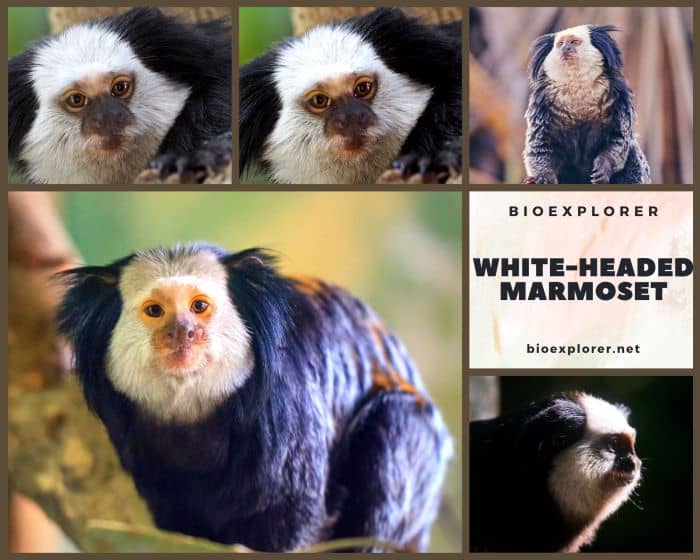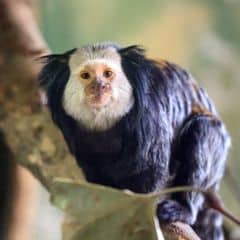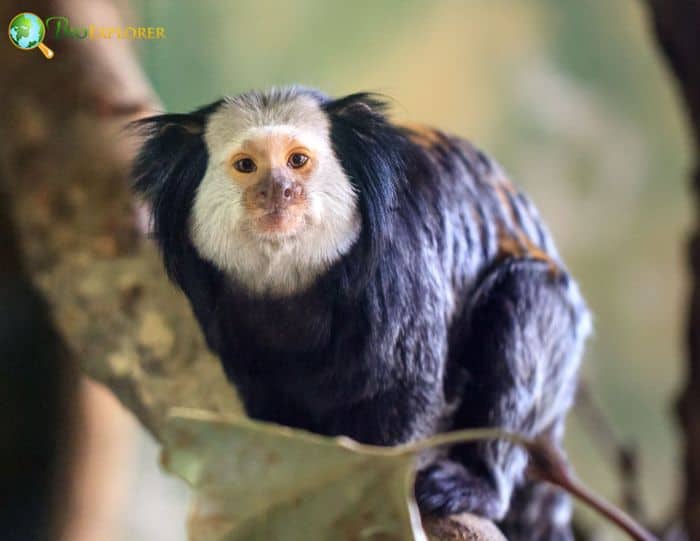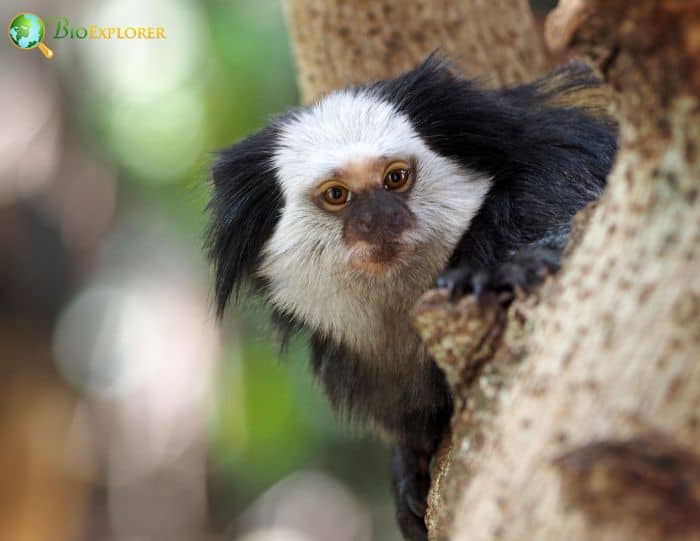
| Animalia | Primates | Callitrichidae | Callithrix | Callithrix geoffroyi |


- Common Name: Geoffroy’s marmoset
- Taxonomy Classification Year: 1812
- Monkey Size: 19.8 to 19.8 cm (7.80 to 7.80 in)
- Skin Color(s): Dark or blackish brown
- Habitat: Rainforest
- Diet: Omnivorous
- Native Countries: Brazil
Geoffroy’s marmoset Distribution
White-Headed Marmoset Characteristics

The Geoffroy’s marmoset[1], also called Geoffrey’s marmoset, white-headed marmoset, or tufted-ear marmoset is a marmoset native to the forests of eastern Brazil, where it is native to Minas Gerais, Espírito Santo, and Bahia.
- Geoffroy’s marmosets are small primates, only around 20 cm long, with a tail of around 29 cm.
- Females typically weigh around 190 grams, while males weigh between 230 and 350 grams.
- The body is usually blackish or dark brown. The tail is surrounded by black and gray bands.
- Adults have white foreheads, temples, cheeks, and throats. Also, adults have black tufts of hair in front of their ears.
- Juveniles differ from adults because they lack both ear tufts and white markings on the face.
- Instead, juveniles grow their ear tufts at around two weeks and have full adult markings by five months.
What Do Geoffroy’s marmosets Eat?

The Geoffroy’s marmoset nourishes on Abas (Psidium guajava), Brazilian Pepper-Tree (Schinusus terebinthifolius), Black Mulberry (Morus nigra) and Strawberry tree (Muntingia calabura)[¶].
White-Headed Marmoset Facts

- The dominant female and male in each group of Geoffroy’s marmosets form a monogamous pair. Therefore, only this pair will reproduce.
- Pre-copulatory courtship typically begins with sniffing each other’s genitals and object marking, grooming, licking, and cuddling.
- Geoffroy’s marmosets are said to follow swarms of army ants to catch insects expelled by the ants.
- They send out alarm calls when they sense a threat. Also, they have observed scent marking.
- Groups of Geoffroy’s marmosets respond to predator threats by increasing vigilance rates and decreasing rates of foraging and play.
Suggested Reading: Monkeys of The World
Cite This Page
APA7MLA8Chicago
BioExplorer.net. (2025, May 28). White-Headed Marmoset. Bio Explorer. https://www.bioexplorer.net/animals/mammals/monkeys/white-headed-marmoset/.
BioExplorer.net. "White-Headed Marmoset" Bio Explorer, 28 May 2025, https://www.bioexplorer.net/animals/mammals/monkeys/white-headed-marmoset/.
BioExplorer.net. "White-Headed Marmoset" Bio Explorer, May 28 2025. https://www.bioexplorer.net/animals/mammals/monkeys/white-headed-marmoset/.











